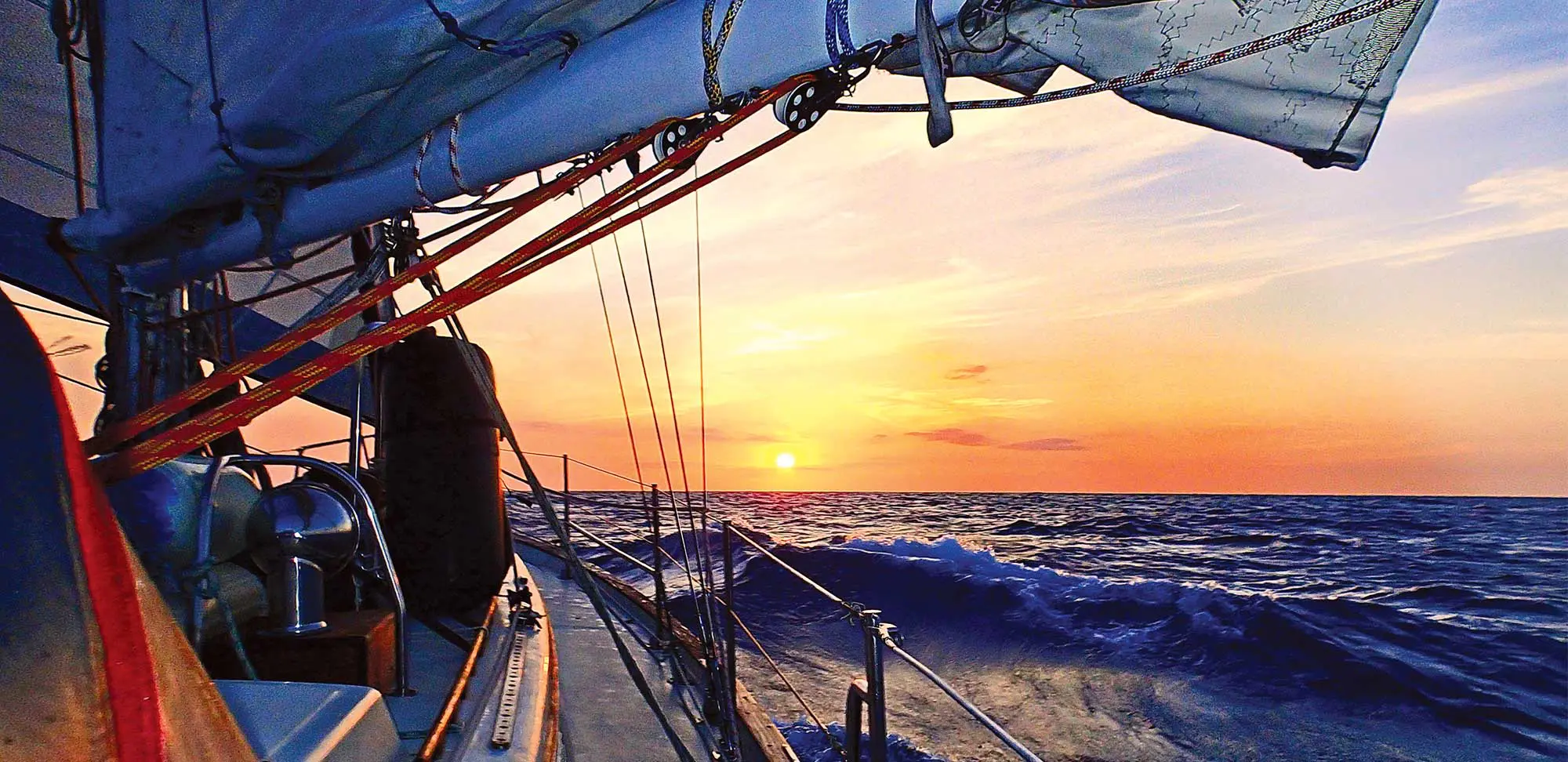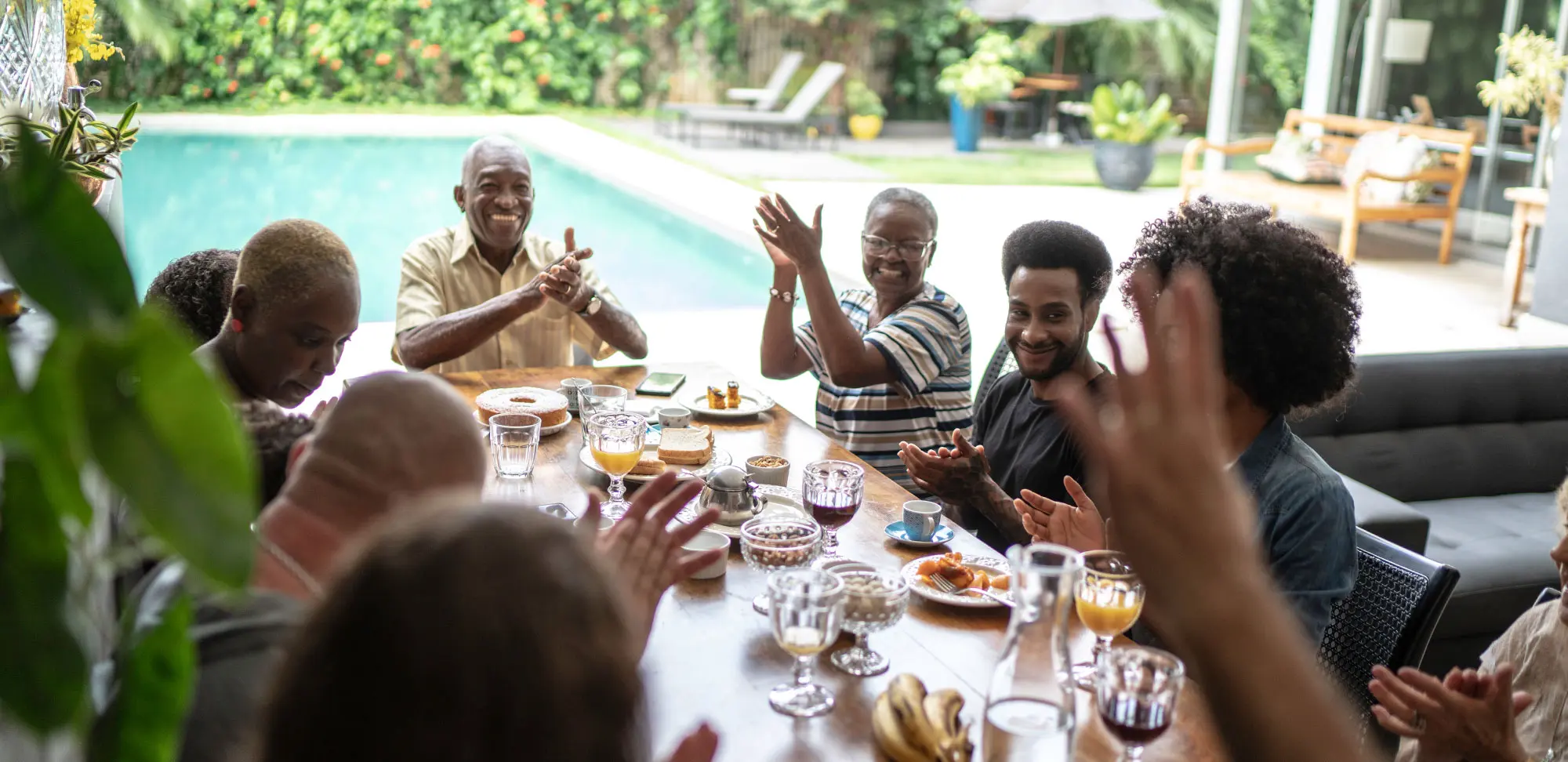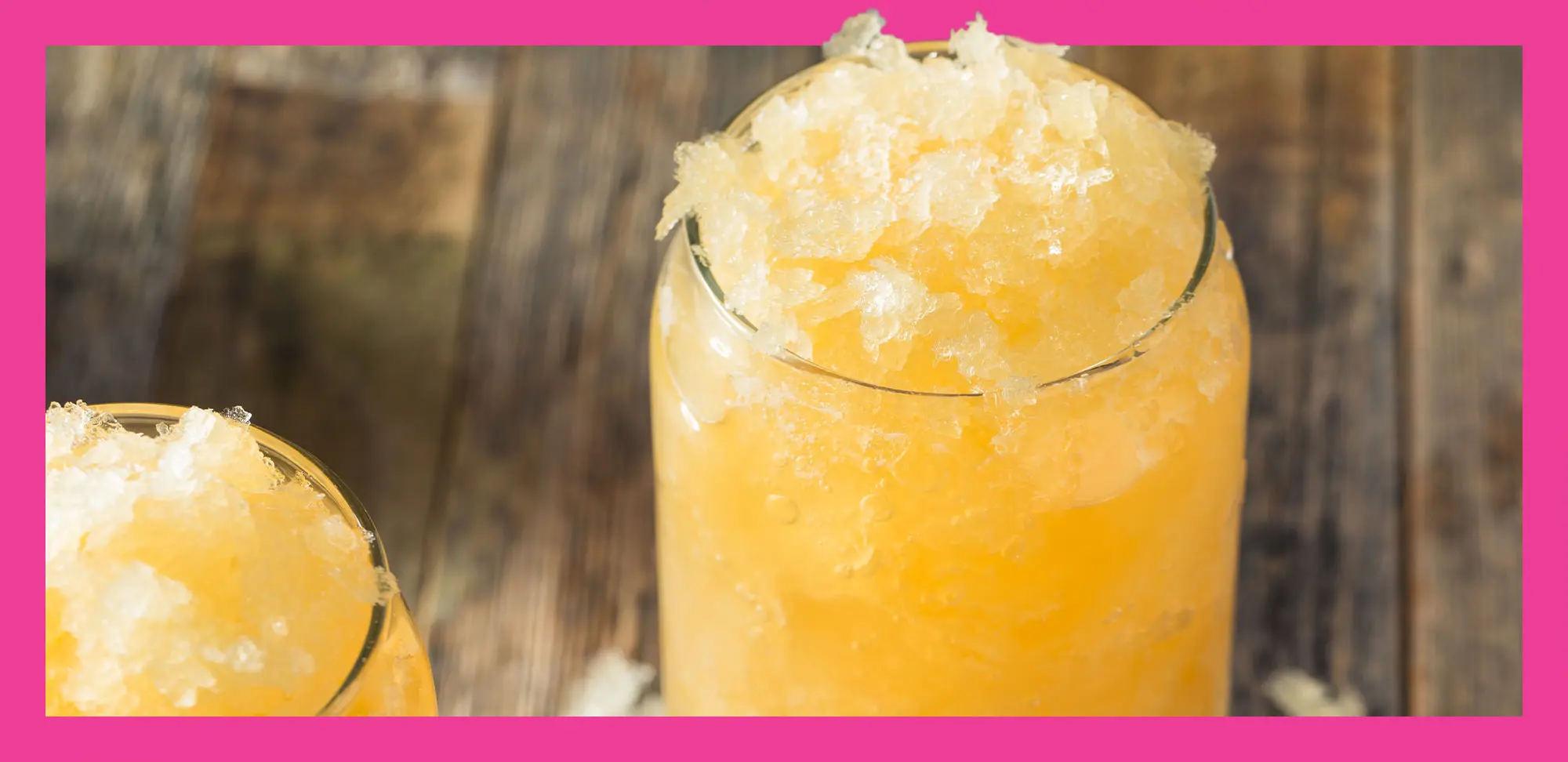In July 2009, Dominique Aucouturier (District 2 Thunder Bay) and Richard Kolomeychuk, her life companion of 40 years, boarded their sailboat, Petite Ourse, and set off from Toronto to realize their retirement dream: to sail around the world. The couple already had their sea legs — Kolomeychuk was an avid sailor, and Aucouturier had learned to sail in France — but this adventure of a lifetime was not a spur-of-the-moment decision.
Aucouturier and Kolomeychuk bought Petite Ourse, a Valiant 40 twelve-meter cruising monohull sailboat powered by solar, wind and a generator, especially for the trip. For comfort and safety, it was equipped with air conditioning, a refrigerator and a freezer. A desalinator was installed to convert salt water into fresh, and Wi-Fi, a telephone and a radio were installed.
The couple spent two and a half years getting Petite Ourse ready. To be on the safe side, they sailed the Great Lakes to make sure the boat was up to the voyage. The month and a half spent sailing down the St. Lawrence River also provided a testing ground before getting to the open ocean. Repairs during this portion of the trip were made to the engine and generator.
Aucouturier had taken a sabbatical in 1992–93, and the couple had sailed from Toronto to the Mediterranean and back in their previous yacht, Golden Aura. They had already crossed the Atlantic on that journey, but the boat was smaller and the trip was only 17,000 nautical miles (31,000 kilometres) — not the 35,000 nautical miles (64,000 kilometres) they were planning to tackle in Petite Ourse.
After leaving Canada and sailing along the east coast of the United States, the couple made stops in the Bahamas; Cuba; the islands off the east coast of Mexico; and Central and South America, including Guatemala, Honduras, and the islands off the coasts of Colombia and Panama, where they crossed to the Pacific.
The most polluted place they experienced during their journey was the San Blas Islands, off the coast of Panama. Although these islands look like paradise, “the Indigenous people who live there have to deal with an ocean and beaches of garbage and plastic,” says Aucouturier.
The adventure continued along the west coast of South America, with a stop in Ecuador. Then it was on to the Galápagos Islands to prepare for crossing the Pacific.
On May 11, 2012, they set sail for the Marquesas Islands in French Polynesia, where they docked 30 days later. This was Aucouturier’s favourite stop. “It’s very special,” she says, “because of the hospitality of the local population, the mild climate, the beauty of the landscapes and the freshness of the fruits and fish.”
In the Tuamotu Archipelago, Aucouturier remembers snorkelling in a lagoon with clear turquoise water and countless colourful fish, surrounded by a coral atoll. “Time stood still,” she says. “We were amazed by the grandeur and tranquility — it was magical.”
Then the couple headed to the Society Archipelago, which includes Tahiti and is known for its black pearl farms, and on to the Cook Islands, Samoa, Tonga and Fiji. They docked in New Zealand, where they stocked up on wine and fresh fruit, and then set sail to New Caledonia and the islands of Vanuatu.
The couple docked in Australia in December — early summer — where they rented a camper van and toured the country for a few months. In the spring, they sailed Petite Ourse inside the Great Barrier Reef on their way to Indonesia, Singapore, Malaysia, Thailand and Sri Lanka. In Malaysia, they took a train from Kuala Lumpur to Bangkok, Thailand, and then a bus and ferry back to Malaysia.
Aucouturier and Kolomeychuk sailed on to the Maldives, Seychelles and Mayotte, an archipelago in the Indian Ocean off the coast of East Africa. Then the couple pushed on from Mozambique to South Africa, a crossing characterized by very strong currents and high winds. During this trip, like everywhere else they sailed, the couple enjoyed the playful company of dolphins and the impressive and sometimes fearsome presence of humpback, grey and pilot whales.



From the southern tip of Africa, Petite Ourse headed toward the Atlantic, with a short stop at the island of Saint Helena, famous for its unique, single-bean arabica coffee and, of course, Napoleon Bonaparte’s exile.
Petite Ourse then turned north and west on its way toward stops in several Caribbean ports. The couple had to remain vigilant in Trinidadian waters to avoid pirates, who were out on the high seas, looking to rob (and sometimes murder) as a result of the economic collapse of neighbouring Venezuela.
Aucouturier and Kolomeychuk’s epic adventure ended in Annapolis, Md., where they sold the sailboat and returned to Canada by land.
Original French feature and English translation by Pauline Duquette-Newman.
“We were amazed by the grandeur and tranquility. It was magical.”

Planning, precautions and pirates
Q: Was the trip everything you had hoped it would be?
Dominique: Yes, and even better, because it is fantastic to live what we learn in books. For example, to arrive in Tonga, where the international date line begins and be told proudly by the inhabitants that you can celebrate your birthday twice in 24 hours if you go from Tonga to American Samoa. Or to experience the alizés — the trade winds — that blow all around the planet from east to west, and to be transported by them as sailors have done since ships set out to explore the world. To savour the underwater beauty of the sea, which is unimaginable, or to experience it at sunset, or at night with all the stars and the moon as your only companions. To learn from the people we met, and the cultures we explored.
Richard: The trip was much better than we hoped for. If I had known
this life at an earlier age, I don’t think I would have gone back to an earthbound existence.
Q: Did you have to get all your documentation for each country you visited before you left Canada?
Richard: Every country is different. Many places required that we have an agent acting on our behalf with the government. In many countries, you are limited to where you can arrive. Some require prior notice of your arrival data; otherwise, you risk a large fine or being turned away. Proper etiquette when arriving in a country was to fly a yellow quarantine flag that was taken down after a health clearance, which happened after clearing customs.
In Cuba, our boat was searched for pornography and drugs, and we needed to report every move our boat made. In the Maldives, a Muslim country, the boat was checked for Bibles before we could get repairs.
In Australia, the boat was inspected for termites and biological growth on the [hull]. In New Zealand, our homemade meat preserves were confiscated. In the United States, it’s mandatory to report every port move you make.
Q: Were you ever afraid?
Dominique: When the waves were high — five or six metres — especially in the Atlantic from South Africa to Saint Helena island. The boat would go up the wave, which took a few seconds, and then suddenly fall back down. I learned to go with the rhythm and, little by little, I got used to it. I told myself that as long as the boat managed to go up and down a dozen waves, we would be fine. But we had a very good boat and a very able captain who had all my trust! At night, if I saw a small boat with very few lights approaching Petite Ourse, I was afraid they were pirates. Getting from the boat to the shore of Saint Helena island was scary but also funny — we thought we were Jane and Tarzan.
Richard: The ocean swells there are enormous. The only way you can get from the mooring-field tender to the dock and vice versa is to grasp a rope and swing your way onto the dock or boat. It’s scary at first but, after a few times, it becomes a routine.
Q: You mentioned pirates. What precautions did you take?
Richard: At the time, the most dangerous place for pirates was off the coast of Somalia at the [mouth] of the Red Sea. We avoided this area and opted to go to South Africa and around the Cape of Good Hope. In the Caribbean, we accessed the regional cruisers’ safety net, which lets you know about recent boat burglaries, thefts and, in a few cases, murders. But it’s safer to cruise on a sailboat than to travel by car if you pay attention to safety notifications.

An unforgettable adventure
Carried by the trade winds, Petite Ourse sailed 45,000 nautical miles (83,000 kilometres) across the seas of the Northern and Southern hemispheres, an adventure that would last off and on for almost 10 years. Aucouturier and Kolomeychuk regularly returned home for several months at a time to take care of their personal affairs, such as medical and dental appointments and filing their income taxes, and to avoid sailing during hurricane season.
Along the way, they stopped regularly for groceries, to refuel and for routine boat maintenance. They had to comply with the requirements of each of the more than 40 countries they visited: obtaining permission to dock, submitting the necessary documentation and completing boat inspections. Aucouturier has both French and Canadian passports, which sometimes made passing through customs easier, as some countries prefer one over the other.
The couple’s remarkable journey provided them with unforgettable opportunities to experience local cultures and meet people, who invited them to family dinners and cultural, sporting and religious events.
They say the food was excellent throughout their expedition. They stocked up on supplies at ports of call, fished en route and enjoyed treats they’d brought from Canada. “We ate very well around the world,” says Aucouturier. “What could be better than freshly caught fish: mahi mahi, wahoo, bonito. Once in a blue moon, we ate something we brought from Canada, like maple syrup on pancakes on a Sunday morning.“
When the boat was not moored, they spent their days preparing meals, sailing, reading, writing logbook reports and posting on their blog, Voyages of Petite Ourse (sailblogs.com/member/petiteourse/392567). Friends joined them occasionally, which was a welcome change of company.
Although Aucouturier was officially retired, she never really gave up teaching. When the opportunity arose during the couple’s world tour, she offered her services as a volunteer teacher, notably in Indonesia and New Zealand. It was an experience she enjoyed, because leaving the classroom had been difficult. “When we came back, I would have liked to have continued teaching, but COVID-19 turned everything upside down,” she says .
As a young girl, Aucouturier was already fidgety. “I must have been eight years old, and I still remember the day I decided to travel the world, to explore different cultures and countries. Now that I’ve done it, I would like to do it again, again and again. It’s a passion!” she says.
It’s no surprise, then, that she and Kolomeychuk are already planning their next adventure. They might buy a new boat and set sail for the Aleutian Islands, other parts of Alaska or Russia — or maybe just see where the wind takes them.









